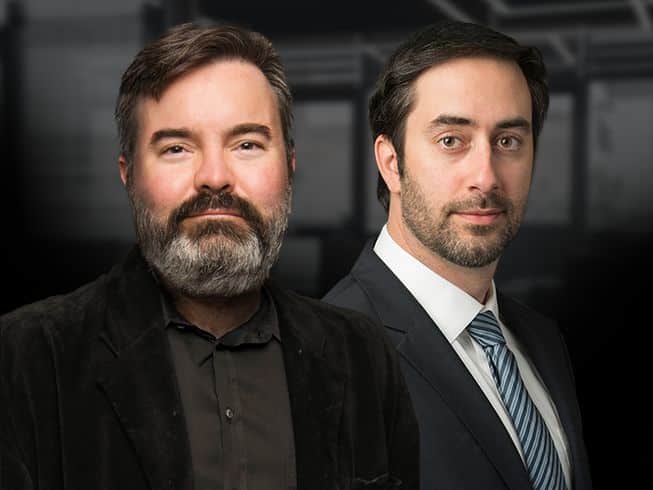U.S.S. Baron (DE-166)
Over A Billion Recovered Nationwide
U.S.S. Baron DE-166 (Destroyer Escort. Class: Cannon)
The History of the U.S.S. Baron
Richard Baron was responsible for the operation of a US Naval yard in the Philippines. Baron was nominated for a Navy Cross for heroism in fighting back against the Japanese, in their attacking the Philippines on December 10, 1941. Baron received the award, posthumously, because a later Japanese attack led to his death, as he again acted heroically: this time attempting to save crucial military documents from a US Navy building under attack in Cebu City.
The U.S.S. Baron and her crew were eventually awarded three battle stars for WWII service. As with most vessels of the age, America quickly increased its consumption of asbestos in the construction and repair of desperately needed destroyer escorts such as the Baron DE-166. The history of the Baron paralleled the Navy’s victories in the Pacific, and America’s later support for emerging democracies in South America.
Construction
The Federal Shipbuilding and Drydock Company laid the keel in the fall of 1942, only eight months after Lieutenant Commander Baron had been killed in Cebu. Designed for a crew of under 200, Baron launched in May 1943.
Decades later, the risks of asbestos became more obvious in both constructing and operating vessels such as the Baron. Federal Shipbuilding and Drydock records later demonstrated work conditions at a shipyard wasn’t easy, mostly due to the expected need to quickly prepare ships to invade mainland Japan. But this speed also rested on the widespread use of asbestos. The threat of asbestos, however, was rarely known by the workers and crews most in touch with it. In rushing to meet the need for an invasion armada, both crew members (such as on the U.S.S. Baron) and probably also shipyard employees, were at risk because of widespread asbestos uses throughout naval vessels. Experts have now pointed out how even tools, as well as bulkheads and insulation and weapons, routinely used asbestos.
Repairs and Upgrades
The U.S.S. Baron left New York, heading directly into the most dangerous work in the Pacific. These long periods of patrol typically led to at-sea repairs exposing, using and replacing asbestos. Unexploded mines, for example, were a danger to all vessels in Japanese shipping lanes, with explosions becoming more common as the end of the war approaching. The U.S.S. Baron’s end-of-war duty was first to train ships to become sub hunters. From September to November 1944, Baron was at Mare Island for overhaul. These periods of overhaul typically meant working in close quarters, cramped and hot work with asbestos only inches away, or being torn out and re-wrapping pipes and boilers with new asbestos. After her extensive overhaul, the Baron spent the rest of her duty mostly on patrol for submarines, as the Navy closed a circle around Japan.
Machinists and those who made engine or equipment repairs were found to have been most at risk of asbestos-related illnesses. Yet, as later findings about asbestos were to finally show, using asbestos to lower fire risks, as well as for hull and engine insulation, also meant asbestos was often present in almost all parts of a vessel such as the Baron. Asbestos use on US Navy ships after WWIII even increased during the Cold War. Only in the 1970s did the Navy adopt rules about asbestos for safety improvements to help protect US Navy crews and shipyard workers.
Asbestos Risks On the U.S.S. Baron (DE-166)
Special concerns about fire and explosions meant asbestos was used widely throughout possibly vulnerable areas of vessels, such as the U.S.S. Baron. Many crew members on similar destroyer escorts later told of how they slept, “inches away” from exposed asbestos.
The fate of the U.S.S. Baron became a common story for America’s battle-weary vessels. The Baron was eventually decommissioned (in 1946), but her important role in American policy was far from done. What to do with mothballed US ships, especially laden with asbestos, has been a problem since the end of WWII. First, many naval vessels are cannibalized for parts and useful equipment. Before the 1970s, this meant possible exposure to more asbestos. Eventually, the U.S.S. Baron was sent to the government of Uruguay. In 1990, she was scrapped, ending her three decades of service to the navy of Uruguay.
We Take Our Clients’ Cases Personal
Helping Victims of Mesothelioma Is Why We Do What We Do
Your firm has made this stressful process easy and comfortable for me.
I couldn’t have done it without you.
The professionals at Shrader & Associates did the work, hassle free, and ensured I was able to leave a legacy for my family.
Your team stood by me throughout the entire process.
Thanks to you, the grief of my loss would have been almost unbearable otherwise.

The Right Team Makes a Difference
Mesothelioma cases require technical knowledge and an understanding of complex laws. An attorney with experience trying these claims and substantial resources to leverage on your behalf is your best bet to having a strong case. We are nationally recognized for providing quality representation to mesothelioma patients and their families.
Meet Our Attorney










![aaj-leaders-forum[2] U.S.S. Baron (DE-166)](https://shraderlaw.com/wp-content/uploads/2022/04/aaj-leaders-forum2.png)


